If you’re an avid bird watcher or simply curious about the feathered friends that call your backyard home, then this article is a must-read. With information gathered from the reliable citizen science program eBird, it offers a comprehensive guide to the most common backyard birds in New York. From the charismatic Blue Jay to the iconic American Robin and vibrant Northern Cardinal, each bird is showcased with stunning pictures and accompanied by tips on how to attract them to your own backyard. But it doesn’t stop there – this article also provides an overview of birding in New York State, as well as specific information for bird enthusiasts in New York City, Rochester, Buffalo, and Albany. Whether you’re a seasoned bird watcher or just embarking on this exciting hobby, this guide will undoubtedly become your go-to resource, also mentioning eBird as a valuable tool for bird sightings and photos, along with local bird watching clubs to connect with fellow enthusiasts. So prepare to be captivated by the fascinating world of New York’s backyard birds!
Overview of Birding in New York State
New York State offers a diverse range of birding opportunities, with its diverse habitats and abundance of bird species. From the bustling streets of New York City to the serene wilderness of the Adirondack Mountains, birders in New York State are spoiled for choice. This article will provide an overview of birding in the state, as well as specific information on birding hotspots and tips for birding in different cities. Whether you’re a seasoned birder or just starting out, New York State has something for everyone.
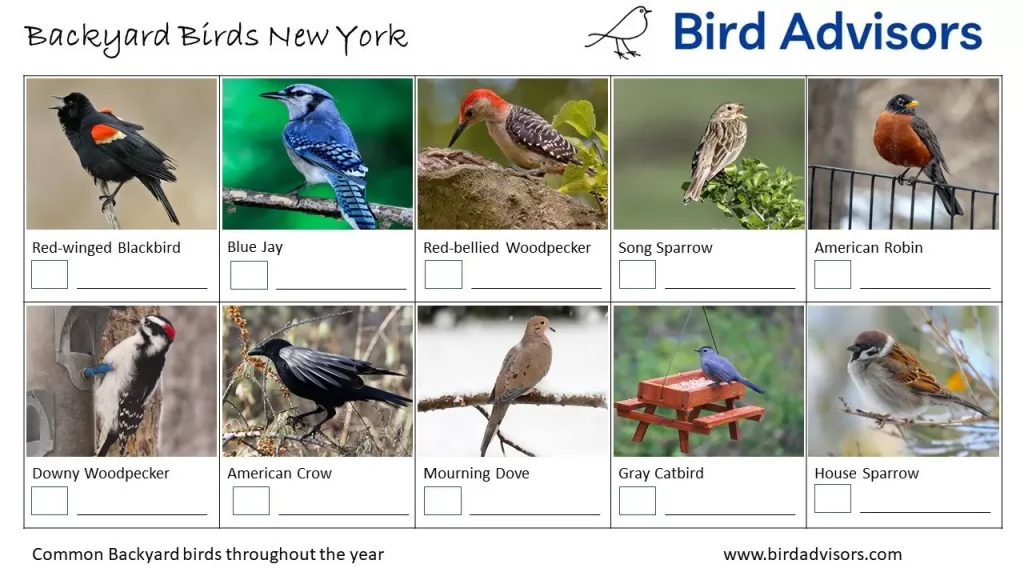
Birding Hotspots in New York State
New York State boasts several renowned birding hotspots that attract birders from near and far. One such hotspot is Central Park in New York City, which is a haven for migrating birds. The Ramble and the Shakespeare Garden within Central Park are particularly popular among birders. The Montezuma National Wildlife Refuge, located in the Finger Lakes region, is another hotspot known for its diverse bird population. With its expansive wetlands and grasslands, this refuge attracts a wide variety of waterfowl and shorebirds.
The Adirondack Mountains in upstate New York are also a prime birding location. The High Peaks region offers opportunities to see birds such as the Boreal Chickadee, Spruce Grouse, and Black-backed Woodpecker. The Hudson Valley is yet another hotspot, with its mix of forests, wetlands, and grasslands attracting a wide range of bird species.
Best Time of Year for Birding in New York State
The best time for birding in New York State varies depending on the region and the specific bird species you are interested in seeing. Spring and fall are particularly popular seasons for birding due to the migration of numerous bird species. In spring, birders can witness the return of neotropical migrants from their wintering grounds, while fall brings the spectacle of birds heading south for the winter.
Different regions within the state also have their own peak birding seasons. In New York City, for example, late April to early June is an excellent time to observe migrating birds. In the Adirondacks, birding is best in late spring and early summer when the forests are alive with breeding birds. The Finger Lakes region is teeming with bird activity in the fall when waterfowl and shorebirds pass through on their migration.
Tips for Birding in New York State
To make the most of your birding experience in New York State, here are a few tips to keep in mind. First and foremost, familiarize yourself with the bird species you are likely to encounter in the region you plan to visit. Field guides and online resources can be helpful in this regard.
It’s also a good idea to join a local birding club or group. These organizations often organize group birding trips and can provide valuable insight into birding hotspots and local bird behavior. eBird, a citizen science program run by the Cornell Lab of Ornithology, is a great resource for finding birding hotspots, recording your sightings, and connecting with other birders.
Lastly, be prepared for the weather, especially if you plan to bird in the colder months. Dressing in layers, wearing appropriate footwear, and carrying binoculars and a field guide are essentials for a successful birding outing.
Birding in New York City
New York City may not be the first place that comes to mind when you think of birding, but this bustling metropolis is actually a haven for birdwatchers. With its numerous parks, gardens, and green spaces, New York City provides ample opportunities to observe a wide variety of bird species. Here’s a closer look at birding in the Big Apple.
Birding Hotspots in New York City
Central Park is undoubtedly the crown jewel of birding in New York City. This urban oasis is home to more than 200 bird species, making it a must-visit location for bird enthusiasts. The Ramble, a densely vegetated area within the park, is particularly renowned for its bird diversity. Other notable birding hotspots in the city include Prospect Park in Brooklyn, Jamaica Bay Wildlife Refuge in Queens, and Pelham Bay Park in the Bronx.
Best Time of Year for Birding in New York City
Birding in New York City is rewarding year-round, but certain seasons offer unique opportunities. Spring and fall are especially popular due to the occurrence of migration. Many bird species pass through the city during these seasons, making it an exciting time for birders. In spring, birders can expect to see colorful warblers, flycatchers, and other neotropical migrants. Fall brings the chance to observe raptors, waterfowl, and sparrows as they head south.
Tips for Birding in New York City
Birding in New York City comes with its own set of challenges, but with a few tips, you can make the most of your experience. Timing is crucial, so try to visit popular birding spots early in the morning when bird activity is at its peak. Familiarize yourself with the common bird species in the city and their preferred habitats to increase your chances of spotting them.
Don’t forget to bring your binoculars, a field guide, and a notepad to record your sightings. Consider joining a local birding group or participating in birding events to learn from experienced birders and discover new locations. Finally, be respectful of the parks and wildlife by following park regulations and practicing ethical birding behavior.
Birding in Rochester
Rochester, located in western New York, is a fantastic destination for birders. With its combination of urban parks, waterfront areas, and nearby natural areas, Rochester offers a wide range of birding opportunities. Here’s what you need to know about birding in this vibrant city.
Birding Hotspots in Rochester
Durand Eastman Park is a popular birding hotspot in Rochester. This expansive park features a mix of habitats, including woodlands, meadows, and a picturesque beach along Lake Ontario. The Genesee Riverway Trail, stretching along the Genesee River, is another great spot for birdwatching. The Braddock Bay Wildlife Management Area, just west of Rochester, is known for its diverse bird population, especially during the spring and fall migration.
Best Time of Year for Birding in Rochester
The best time for birding in Rochester is during the spring and fall migration seasons. In spring, birders can see a wide variety of warblers, thrushes, and other neotropical migrants as they make their way north. Fall brings the opportunity to observe raptors, waterfowl, and shorebirds as they head south for the winter. Summer is a good time to see breeding birds, including Baltimore Orioles, Yellow Warblers, and Indigo Buntings.
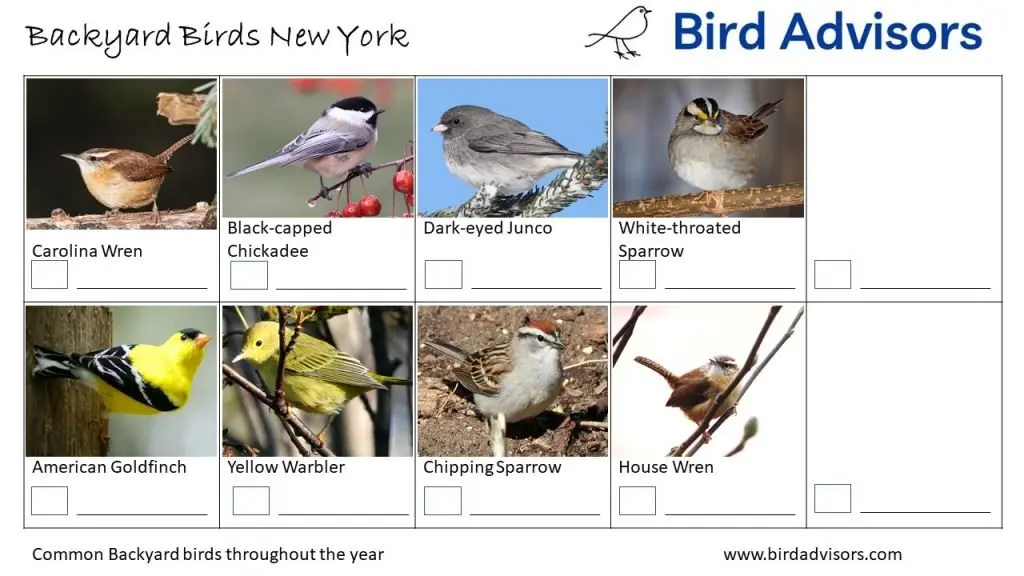
Tips for Birding in Rochester
When birding in Rochester, it’s important to be prepared for changing weather conditions. Dressing in layers is advisable, as temperatures can vary throughout the day. Binoculars and a field guide are essential tools for bird identification. Consider joining a local birding club or participating in guided bird walks to enhance your birding experience. Additionally, be respectful of private property and follow any posted guidelines when birding in parks or natural areas.
Birding in Buffalo
Buffalo, located in western New York near the Canada border, offers fantastic birding opportunities for outdoor enthusiasts. With its proximity to the Great Lakes and diverse range of habitats, Buffalo attracts a wide variety of bird species. Here’s a closer look at birding in this vibrant city.
Birding Hotspots in Buffalo
Tifft Nature Preserve is a popular birding hotspot in Buffalo. This 264-acre nature preserve features woodlands, marshes, and ponds, making it an ideal habitat for a diverse range of bird species. The Niagara River Gorge is another must-visit location for birders. Its towering cliffs and rushing waters attract raptors, waterfowl, and songbirds. Other notable birding spots in the Buffalo area include the Beaver Meadow Audubon Center and the Times Beach Nature Preserve.
Best Time of Year for Birding in Buffalo
The best time for birding in Buffalo is during the spring and fall migration seasons. In spring, birders can witness the spectacle of neotropical migrants returning from their wintering grounds. Warblers, thrushes, and sparrows are among the many species that pass through Buffalo during this time. Fall is equally exciting, as birds make their way south. Raptors, waterfowl, and songbirds can be observed along the shores of Lake Erie and the Niagara River.
Tips for Birding in Buffalo
Buffalo offers plenty of birding opportunities, and with a few tips, you can make the most of your birding outings. Research the common bird species in the area and familiarize yourself with their preferred habitats to increase your chances of spotting them. Early mornings and late afternoons are typically the best times for birding, as bird activity tends to be highest during these hours.
Consider visiting birding hotspots during weekdays to avoid crowds and enhance your birding experience. Dress in layers and wear comfortable footwear, as weather conditions can change quickly. Binoculars, a field guide, and a notepad for recording your observations are essential tools for every birder. Lastly, respect the natural areas and follow any posted guidelines to ensure the protection of the wildlife and their habitats.
Birding in Albany
Albany, the capital of New York State, offers birding opportunities for both residents and visitors. With its mix of urban and natural areas, Albany provides a range of habitats for birds to thrive. Whether you’re exploring the city’s parks or venturing into nearby wilderness areas, Albany is a great destination for birdwatchers.
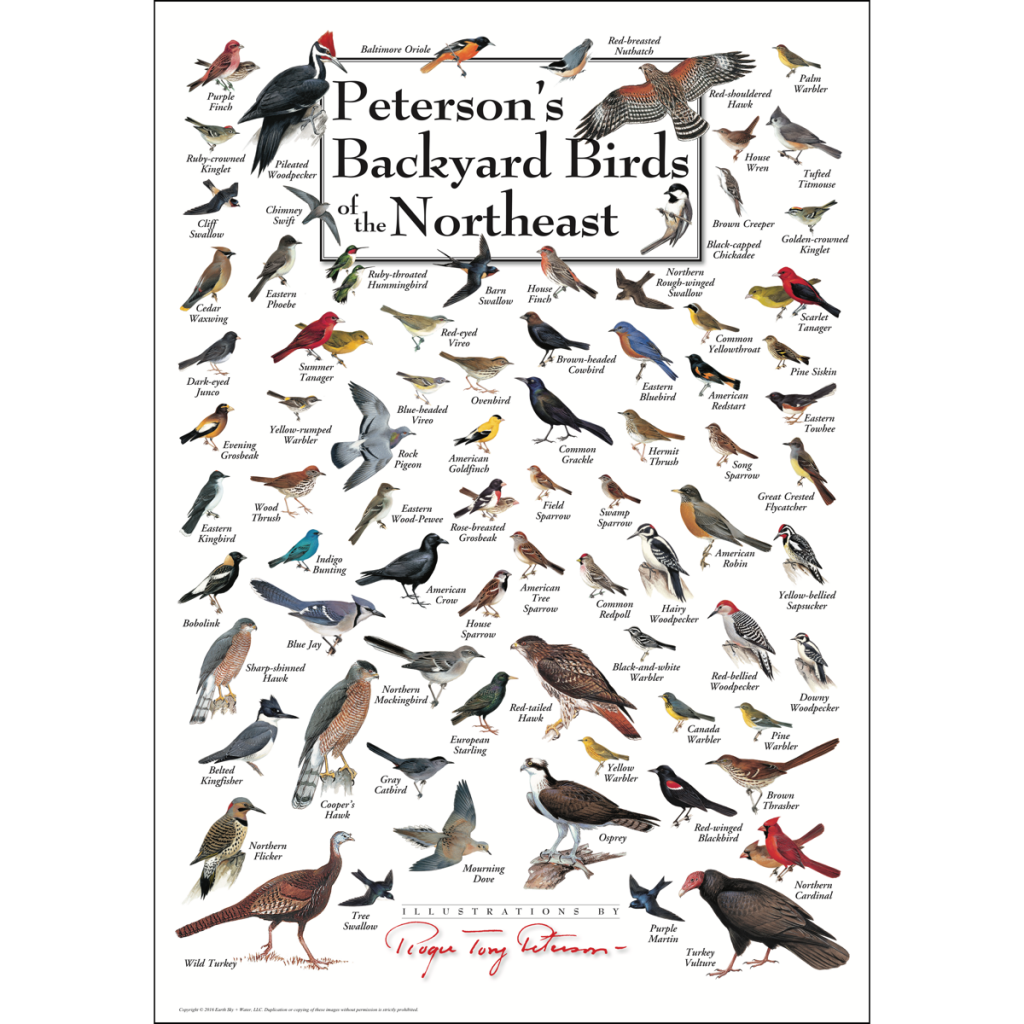
Birding Hotspots in Albany
The Albany Pine Bush Preserve is a must-visit birding hotspot in the area. This unique inland pine barrens ecosystem is home to several rare bird species, including the Karner Blue Butterfly. The preserve offers a network of trails that allow birders to explore different habitats and spot a variety of bird species. The Five Rivers Environmental Education Center, located just outside Albany, is another popular birding location. With its diverse habitats, including wetlands, forests, and meadows, this center attracts a wide range of bird species year-round.
Best Time of Year for Birding in Albany
The best time for birding in Albany depends on the specific bird species you are interested in observing. Spring and fall are generally the most popular seasons for birding, as they coincide with migration periods. In spring, birders can expect to see a variety of songbirds, including warblers and thrushes. Fall offers the opportunity to observe raptors, waterfowl, and sparrows as they pass through Albany on their way south.
Tips for Birding in Albany
When birding in Albany, it’s important to respect the natural areas and follow any posted guidelines. Be aware of the specific habitats that attract certain bird species and plan your outings accordingly. Early mornings and late afternoons are typically the best times for birding, as bird activity tends to be highest during these hours.
Consider joining a local birding group or participating in guided bird walks to enhance your birding experience. Binoculars, a field guide, and a notepad for recording your sightings are essential tools for every birder. Dress in layers and wear comfortable footwear to ensure your comfort during your outings. Finally, be patient and observant, as many bird species may require a keen eye and ear to detect.
Blue Jay
Of all the bird species found in New York State, the Blue Jay (Cyanocitta cristata) is one of the most common and recognizable. With its vibrant blue plumage, black crest, and white belly, the Blue Jay is a striking bird that is often heard before it is seen. Here’s a closer look at this fascinating species.
Physical Description
The Blue Jay is a medium-sized songbird, measuring approximately 9-12 inches in length. It has a stocky build with a short neck and a large head. Its most notable feature is its bright blue feathers on its wings, back, and tail. The Blue Jay also has a black crest on its head, which it can raise or lower depending on its mood. Its chest and belly are white, and it has a black collar around its neck.
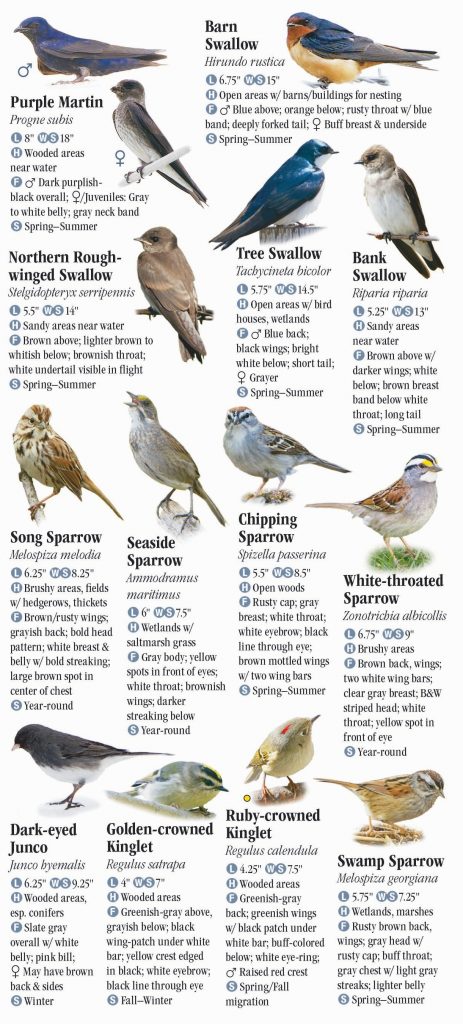
Habitat
Blue Jays can be found in a variety of habitats, including woodlands, parks, and suburban areas. They are adaptable birds and can thrive in both rural and urban environments. Blue Jays are known to be cavity-nesters, often using old woodpecker holes or building nests in the fork of a tree branch.
Behavior
Blue Jays are highly vocal birds and are known for their loud, raucous calls. They have a wide range of vocalizations, including mimicry of other birds’ calls. Blue Jays are social birds and are often found in small flocks. They are known to be territorial and will defend their feeding areas from other birds.
Feeding Habits
Blue Jays have an omnivorous diet, feeding on a variety of foods. They eat nuts, seeds, fruits, insects, and even small vertebrates such as frogs and lizards. Blue Jays are adept at caching food, meaning they will store surplus food for later consumption. They have been known to bury acorns and retrieve them later when food is scarce.
How to Attract Blue Jays to Your Backyard
To attract Blue Jays to your backyard, you can provide them with a variety of foods. Offering a mix of sunflower seeds, peanuts, and suet in bird feeders will attract Blue Jays, as these foods are among their favorites. Providing a source of water, such as a birdbath or shallow dish, will also attract Blue Jays, as they require water for drinking and bathing. Additionally, planting native trees and shrubs that produce nuts and berries will provide natural food sources for Blue Jays.
American Robin
The American Robin (Turdus migratorius) is a familiar sight in New York State, known for its distinctive orange-red breast and melodic song. This migratory songbird is a true harbinger of spring, with its arrival signaling the end of winter. Here’s a closer look at this iconic species.
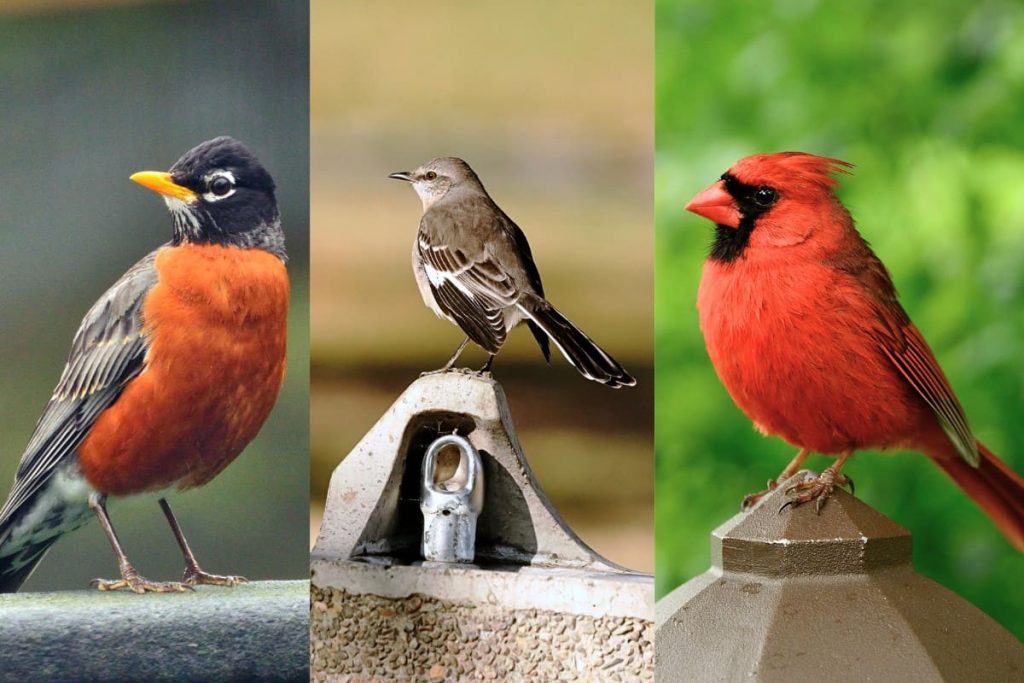
Physical Description
The American Robin is a medium-sized bird, measuring approximately 9-11 inches in length. It has a plump body with a gray-brown back and a reddish-orange breast. Its belly is white, and it has a dark head with a white eye-ring. The American Robin has a long, yellow bill and dark legs. Juvenile robins have speckled breasts and lack the reddish-orange coloration of adults.
Habitat
American Robins can be found in a variety of habitats, including forests, woodlands, parks, and suburban areas. They are adaptable birds and can be seen in both rural and urban environments. Robins are known to nest in trees, building cup-shaped nests made of grass, twigs, and mud.
Behavior
American Robins are known for their energetic hopping and running behavior. They typically forage on the ground, searching for earthworms and insects. Robins are also skilled at catching insects in mid-air. They are social birds and are often seen in large flocks, particularly during the winter months.
Feeding Habits
American Robins have a predominantly insectivorous diet, but they also eat fruits and berries. They are known to hop along lawns, using their sharp eyesight to locate earthworms. Robins will also feed on berries from trees and shrubs, particularly in the fall and winter months when insects are less abundant.
How to Attract American Robins to Your Backyard
To attract American Robins to your backyard, you can provide them with a variety of foods. Offering a mix of mealworms, suet, and chopped fruits in bird feeders will attract robins, as these foods are among their favorites. Planting fruiting trees and shrubs, such as dogwood, serviceberry, and elderberry, will provide natural food sources for robins. Additionally, providing a source of water, such as a birdbath or shallow dish, will attract robins, as they require water for drinking and bathing.
Northern Cardinal
The Northern Cardinal (Cardinalis cardinalis) is one of the most striking birds found in New York State. With its vibrant red plumage, distinctive crest, and melodic song, the Northern Cardinal is a favorite among birdwatchers. Here’s a closer look at this beautiful species.
Physical Description
The Northern Cardinal is a medium-sized bird, measuring approximately 8-9 inches in length. It has a large, cone-shaped bill and a distinctive crest on its head. The male cardinal is a vibrant red color all over, with a black mask around its eyes. The female cardinal, on the other hand, has a more muted brownish-red plumage with hints of red on its crest, wings, and tail. Both sexes have a black patch on their faces.
Habitat
Northern Cardinals can be found in a variety of habitats, including woodlands, thickets, and suburban areas. They are common visitors to backyard feeders, particularly if there is dense vegetation nearby for cover. Cardinals are known to nest in shrubs, building cup-shaped nests made of twigs, grass, and other plant materials.
Behavior
Northern Cardinals are primarily non-migratory birds, meaning they can be seen year-round in New York State. They are often heard before they are seen, with their loud, whistling song carrying through the trees. Cardinals are territorial birds and will defend their feeding areas from other birds.
Feeding Habits
Northern Cardinals have a primarily granivorous diet, feeding on seeds, grains, and fruits. They are common visitors to backyard feeders, where they will readily eat sunflower seeds, safflower seeds, and cracked corn. Cardinals are also known to eat small insects and spiders, particularly during the breeding season when they need extra protein.
How to Attract Northern Cardinals to Your Backyard
To attract Northern Cardinals to your backyard, you can provide them with a variety of foods. Offering a mix of sunflower seeds, safflower seeds, and cracked corn in bird feeders will attract cardinals, as these foods are among their favorites. Planting native trees and shrubs that produce berries, such as dogwood, winterberry, and serviceberry, will provide natural food sources for cardinals. Additionally, providing dense vegetation, such as shrubs and evergreen trees, will offer nesting sites and cover for cardinals.
Other Common Backyard Birds
In addition to Blue Jays, American Robins, and Northern Cardinals, there are several other common backyard birds that can be found in New York State. These birds are frequent visitors to backyard feeders and can provide hours of birdwatching enjoyment. Here’s a closer look at some of these species.
Black-capped Chickadee
The Black-capped Chickadee (Poecile atricapillus) is a small, lively bird that is known for its curious and friendly demeanor. It has a black cap and bib, with a white face and a gray back. The chickadee’s signature call, a sweet and cheerful “chick-a-dee-dee-dee,” is a familiar sound in New York State.
Tufted Titmouse
The Tufted Titmouse (Baeolophus bicolor) is a small songbird with a distinctive crest on its head. It has a gray back, a white belly, and a black patch on its forehead. The titmouse is known for its energetic, acrobatic behavior and its frequent visits to backyard bird feeders.
Downy Woodpecker
The Downy Woodpecker (Picoides pubescens) is the smallest woodpecker in North America, making it a frequent visitor to backyard feeders. It has a black and white checkered back, a white belly, and a small red patch on the back of its head. The downy woodpecker is known for its drumming behavior, in which it uses its bill to tap on trees to communicate and establish territory.
White-breasted Nuthatch
The White-breasted Nuthatch (Sitta carolinensis) is a medium-sized songbird with a distinctive appearance and behavior. It has a blue-gray back, a white breast, and a black cap. The nuthatch is known for its ability to climb down trees headfirst, a unique behavior among birds. It is a frequent visitor to backyard suet feeders.
House Finch
The House Finch (Haemorhous mexicanus) is a small, colorful bird that is commonly found in urban and suburban areas. The male house finch has a reddish-pink plumage on its head, breast, and rump, while the female has a more muted brown coloration. House finches are gregarious birds and can often be seen feeding in flocks.
Conclusion
New York State offers a wealth of birding opportunities for enthusiasts of all levels. From the vibrant streets of New York City to the scenic beauty of Rochester, Buffalo, and Albany, the state is home to a diverse range of bird species and habitats. Whether you’re exploring birding hotspots, attracting birds to your backyard, or simply enjoying the sight and sound of common backyard birds, New York State has something to offer everyone.
By familiarizing yourself with the birding hotspots, best times of year, and tips for different regions, you can enhance your birding experience and increase your chances of spotting some of the fascinating bird species that call New York State home. Whether you’re a resident or a visitor, be sure to take advantage of the numerous birding resources available, such as eBird and local bird watching clubs, to make the most of your time in the field.
So grab your binoculars, put on your walking shoes, and embark on a birding adventure in the beautiful state of New York. You’ll be amazed at the beauty and diversity of the bird species that await you. Happy birding!
Leave a Reply